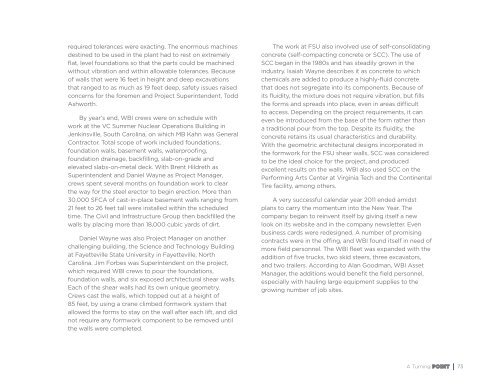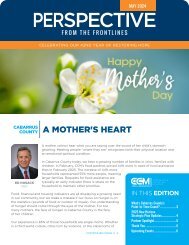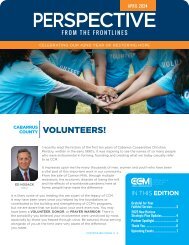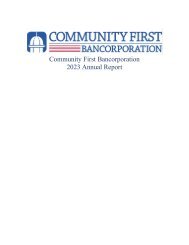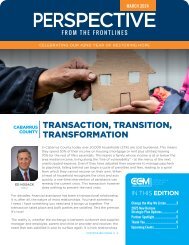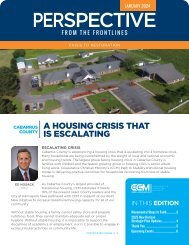Exceeding Expectations
The Story of Wayne Brothers, Inc.
The Story of Wayne Brothers, Inc.
You also want an ePaper? Increase the reach of your titles
YUMPU automatically turns print PDFs into web optimized ePapers that Google loves.
equired tolerances were exacting. The enormous machinesdestined to be used in the plant had to rest on extremelyflat, level foundations so that the parts could be machinedwithout vibration and within allowable tolerances. Becauseof walls that were 16 feet in height and deep excavationsthat ranged to as much as 19 feet deep, safety issues raisedconcerns for the foremen and Project Superintendent, ToddAshworth.By year’s end, WBI crews were on schedule withwork at the VC Summer Nuclear Operations Building inJenkinsville, South Carolina, on which MB Kahn was GeneralContractor. Total scope of work included foundations,foundation walls, basement walls, waterproofing,foundation drainage, backfilling, slab-on-grade andelevated slabs-on-metal deck. With Brent Hildreth asSuperintendent and Daniel Wayne as Project Manager,crews spent several months on foundation work to clearthe way for the steel erector to begin erection. More than30,000 SFCA of cast-in-place basement walls ranging from21 feet to 26 feet tall were installed within the scheduledtime. The Civil and Infrastructure Group then backfilled thewalls by placing more than 18,000 cubic yards of dirt.Daniel Wayne was also Project Manager on anotherchallenging building, the Science and Technology Buildingat Fayetteville State University in Fayetteville, NorthCarolina. Jim Forbes was Superintendent on the project,which required WBI crews to pour the foundations,foundation walls, and six exposed architectural shear walls.Each of the shear walls had its own unique geometry.Crews cast the walls, which topped out at a height of85 feet, by using a crane climbed formwork system thatallowed the forms to stay on the wall after each lift, and didnot require any formwork component to be removed untilthe walls were completed.The work at FSU also involved use of self-consolidatingconcrete (self-compacting concrete or SCC). The use ofSCC began in the 1980s and has steadily grown in theindustry. Isaiah Wayne describes it as concrete to whichchemicals are added to produce a highly-fluid concretethat does not segregate into its components. Because ofits fluidity, the mixture does not require vibration, but fillsthe forms and spreads into place, even in areas difficultto access. Depending on the project requirements, it caneven be introduced from the base of the form rather thana traditional pour from the top. Despite its fluidity, theconcrete retains its usual characteristics and durability.With the geometric architectural designs incorporated inthe formwork for the FSU shear walls, SCC was consideredto be the ideal choice for the project, and producedexcellent results on the walls. WBI also used SCC on thePerforming Arts Center at Virginia Tech and the ContinentalTire facility, among others.A very successful calendar year 2011 ended amidstplans to carry the momentum into the New Year. Thecompany began to reinvent itself by giving itself a newlook on its website and in the company newsletter. Evenbusiness cards were redesigned. A number of promisingcontracts were in the offing, and WBI found itself in need ofmore field personnel. The WBI fleet was expanded with theaddition of five trucks, two skid steers, three excavators,and two trailers. According to Alan Goodman, WBI AssetManager, the additions would benefit the field personnel,especially with hauling large equipment supplies to thegrowing number of job sites.A Turning73


